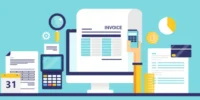What Are the Benefits of Using Mobile Banking Apps?
Mobile banking apps have become increasingly popular in recent years, offering a range of benefits to users. This article aims to explore the advantages of using such apps, focusing on:
-
Improved convenience and accessibility: Mobile banking apps allow users to access their accounts anytime, anywhere, making it convenient for users to manage their finances on the go.
-
Enhanced security measures: Mobile banking apps employ advanced security measures such as biometric authentication and encryption to ensure the safety of users’ financial information.
-
Time and cost savings: By eliminating the need to visit physical bank branches, mobile banking apps save users time and money on travel expenses.
-
Quick and easy account management: Mobile banking apps provide users with the ability to check account balances, transfer funds, pay bills, and perform other financial transactions with just a few taps on their smartphones.
-
Seamless integration with other financial tools: Many mobile banking apps offer integration with other financial tools such as budgeting apps, allowing users to have a comprehensive view of their financial situation.
-
Personalized banking experience: Mobile banking apps can offer personalized recommendations and insights based on users’ spending patterns, helping them make informed financial decisions.
-
Greater control and financial awareness: With mobile banking apps, users have real-time access to their financial information, allowing them to track their expenses, set budget goals, and stay financially aware.
By examining these benefits, readers will gain a comprehensive understanding of the advantages associated with utilizing mobile banking apps.
Key Takeaways
- Convenience and accessibility: Access accounts anytime, anywhere; make payments directly from smartphones; view and track transaction history; promote better financial management.
- Enhanced security measures: Biometric authentication ensures authorized access; real-time fraud detection prevents fraudulent activities; unique biometric characteristics add extra security; algorithms analyze user behavior and transaction patterns; improves security of user data and safeguards against unauthorized access.
- Time and cost savings: Eliminate the need to visit physical bank branches; save time and reduce transportation costs; mobile check deposit eliminates the need to visit ATM or bank branch; streamlined transactions for quick and convenient banking activities; advanced features contribute to significant time and cost savings.
- Quick and easy account management: Instantly view account balances, transaction history, and pending transactions; easily transfer funds between accounts or to other individuals; convenient bill payment eliminates the need to write and mail checks; saves time and provides a streamlined process for managing payments; simplifies transactions and updates financial information.
Improved Convenience and Accessibility
Improved convenience and accessibility are notable advantages of utilizing mobile banking apps.
Mobile payment is one of the key features that enhances convenience for users. With mobile banking apps, individuals can easily make payments directly from their smartphones, eliminating the need for physical cash or cards. This allows for quick and efficient transactions, saving time and effort for users.
Additionally, mobile banking apps provide users with instant access to their transaction history. Users can conveniently view and track their past transactions, making it easier to monitor their spending and keep a record of their financial activities. This accessibility to transaction history promotes better financial management and decision-making.
Overall, mobile banking apps offer a convenient and efficient way for users to make payments and access their transaction history on the go.
Enhanced Security Measures
The implementation of advanced security protocols in mobile banking apps has significantly enhanced the protection of user data and minimized the risk of unauthorized access. To achieve this, mobile banking apps have incorporated various security measures, such as biometric authentication and real-time fraud detection.
-
Biometric authentication: Mobile banking apps utilize biometric features, such as fingerprint or facial recognition, to ensure that only authorized individuals can access the app and conduct transactions. This adds an extra layer of security, as biometric characteristics are unique to each individual and difficult to replicate.
-
Real-time fraud detection: Mobile banking apps employ sophisticated algorithms to detect and prevent fraudulent activities in real-time. These algorithms analyze user behavior and transaction patterns, flagging any suspicious activity or deviations from normal patterns. This allows for immediate intervention and prevention of potential fraud, protecting both the user and the financial institution.
Overall, the integration of biometric authentication and real-time fraud detection in mobile banking apps significantly improves the security of user data and safeguards against unauthorized access and fraudulent activities.
Time and Cost Savings
Time and cost savings can be achieved through the utilization of advanced features in mobile banking applications. These applications offer efficiency gains and streamlined transactions, allowing users to perform various banking activities quickly and conveniently.
With mobile banking apps, users can access their accounts anytime and anywhere, eliminating the need to visit physical bank branches. This not only saves time but also reduces transportation costs.
Additionally, mobile banking apps provide features such as mobile check deposit, which allows users to deposit checks by simply taking a photo of the check. This eliminates the need to visit an ATM or bank branch to deposit checks, further saving time and reducing costs.
Overall, the advanced features in mobile banking apps contribute to significant time and cost savings for users.
Quick and Easy Account Management
To facilitate efficient account management, advanced features in mobile banking applications allow users to easily access and update their financial information. These applications provide several time-saving features and simplify transactions for users.
-
Real-time updates: Users can instantly view their account balances, transaction history, and pending transactions, eliminating the need to wait for paper statements or visit a physical bank branch.
-
Easy fund transfers: Mobile banking apps enable users to transfer funds between their own accounts or to other individuals quickly and securely, reducing the time and effort required for traditional methods such as writing checks or visiting a bank.
-
Bill payment convenience: Users can conveniently pay their bills through mobile banking apps, eliminating the need to write and mail checks or visit multiple websites for different bill payments. This feature saves time and provides a streamlined process for managing and tracking payments.
Seamless Integration With Other Financial Tools
Seamless integration with other financial tools enhances the functionality and accessibility of mobile banking applications. By integrating with other financial tools, such as budgeting apps or investment platforms, mobile banking apps provide users with a comprehensive view of their financial data.
This integration allows users to conveniently access and manage their transaction history within a single platform. Users can easily track their spending, monitor their account balances, and analyze their financial activities.
Additionally, the integration with other financial tools enables users to make informed financial decisions, as they can view their transaction history alongside their budgeting or investment information.
Overall, the seamless integration with other financial tools enhances the user experience of mobile banking apps by providing a holistic and convenient approach to managing and understanding one’s financial data.
Personalized Banking Experience
The seamless integration of mobile banking apps with other financial tools enhances the overall banking experience for users. Building upon this integration, mobile banking apps also offer a personalized banking experience to users.
Here are some key benefits of personalized banking experience offered by mobile banking apps:
-
Personalized Financial Advice: Mobile banking apps utilize advanced algorithms and data analytics to provide users with personalized financial advice. By analyzing users’ financial data and spending patterns, these apps can offer tailored recommendations on budgeting, saving, and investing, helping users make informed financial decisions.
-
Customized Transaction Alerts: Mobile banking apps allow users to set up customized transaction alerts based on their preferences. Users can receive instant notifications for specific types of transactions, such as large withdrawals or unusual spending patterns, ensuring they are always aware of their financial activities and enabling them to quickly detect and respond to any potential fraud or unauthorized transactions.
-
Enhanced Financial Planning: Mobile banking apps enable users to track their expenses, set financial goals, and monitor their progress in real-time. By providing comprehensive financial insights and tools, these apps empower users to plan and manage their finances effectively, promoting financial well-being and stability.
Greater Control and Financial Awareness
Greater control and financial awareness can be achieved by utilizing the features and functions offered by mobile banking applications. These apps provide users with the ability to track their expenses in real-time, allowing them to have a better understanding of their spending habits and make more informed financial decisions.
In addition to real-time expense tracking, mobile banking apps often offer goal-setting features. These features enable users to set specific financial goals and monitor their progress towards achieving them. By setting goals, individuals can work towards improving their financial situation and staying on track with their financial plans.
Furthermore, mobile banking apps provide comprehensive financial insights. These insights can enhance financial literacy by educating users about various aspects of their finances. For example, these apps may offer budgeting tools and strategies for saving money. By providing users with this information, mobile banking apps empower individuals to take control of their finances and make more informed financial decisions.
Frequently Asked Questions
How Do Mobile Banking Apps Ensure the Security of My Personal and Financial Information?
Mobile banking app security measures are crucial to safeguard personal and financial information. Measures include encryption, biometric authentication, and secure data transmission protocols. Password protection is of utmost importance to prevent unauthorized access to sensitive data.
Can I Use a Mobile Banking App to Deposit Checks?
Mobile banking apps have limitations for check deposits. Alternatives include using ATMs or visiting a bank branch. These options may offer more reliable and secure methods for depositing checks compared to relying solely on a mobile banking app.
Are There Any Fees Associated With Using Mobile Banking Apps?
Fees associated with using mobile banking apps can vary depending on the financial institution and specific app. Some common fees include monthly service fees, ATM withdrawal fees, and fees for transferring funds to other accounts.
Can I Transfer Money Between Different Banks Using a Mobile Banking App?
Mobile banking apps allow users to transfer money between different banks, with certain transfer limits in place. One of the benefits of using these apps is the ability to make instant transfers, providing convenience and flexibility for users.
What Additional Features or Services Are Typically Offered by Mobile Banking Apps?
Mobile banking apps typically offer additional features such as digital budgeting tools and integration with other financial apps. These features enhance the banking experience by allowing users to manage their finances effectively and access a wider range of financial services.







